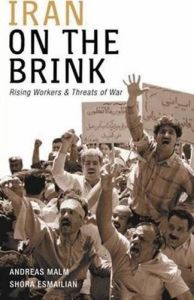Join getAbstract to access the summary!

Join getAbstract to access the summary!
Andreas Malm and Shora Esmailian
Iran on the Brink
Rising Workers and Threats of War
Pluto Press, 2007
What's inside?
Why Iran is one of the Middle East’s most complex societies, and how its oil and nuclear potential may lead to war.
Recommendation
Andreas Malm and Shora Esmailian provide a thorough if leftist history of the fall of the Shah of Iran and the rise of the ayatollahs. Their political perspective weights this complex story as they delve into the political parties, conflicts, motives and factional disputes that brought the ayatollahs to power. Today, Iran has a very complicated political environment as Communist and U.S. ideologies confront radical Islam. The authors reach a few odd conclusions, fall into hackneyed rhetoric about the bourgeoisie, and present very tainted views of Israel, though, if you must quote Ahmadinejad to meet your book’s purpose, it’s hard to avoid rhetoric straight from the source’s mouth. The authors know Iran and analyze its politics in depth. They provide background on the leftist labor parties, their interactions with Islamic radicals, and Iran’s controversial nuclear and oil policies. getAbstract thinks that those who read this with an awareness of its filters will find a telling, alternative perspective on a dangerous problem.
Summary
About the Authors
Andreas Malm and Shora Esmailian are editors at Arbeteren, Sweden’s major progressive weekly newspaper. Malm is the author and editor of several books in Swedish. Esmailian is an Iranian journalist and activist living in Sweden.


















Comment on this summary